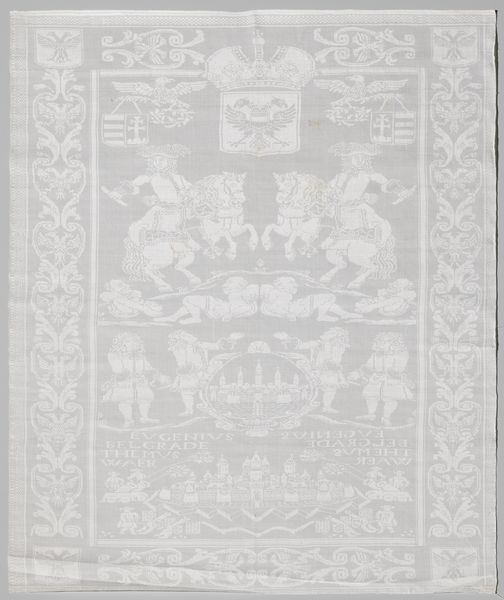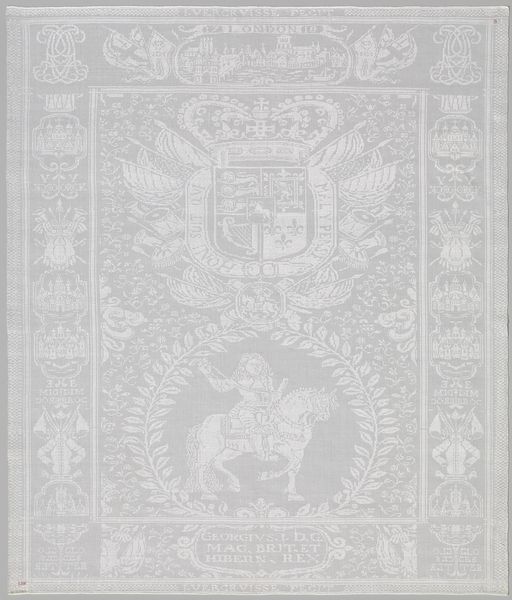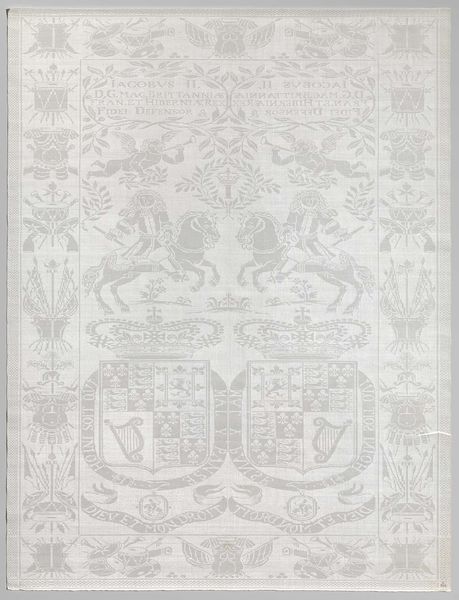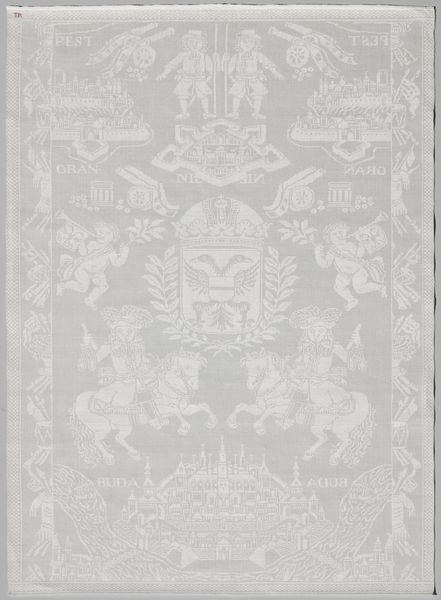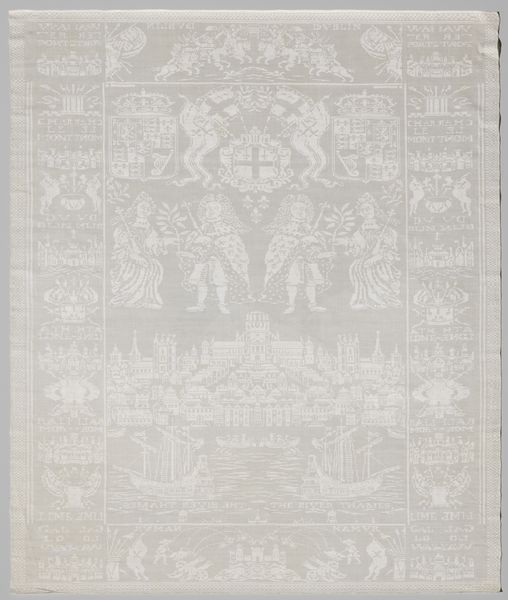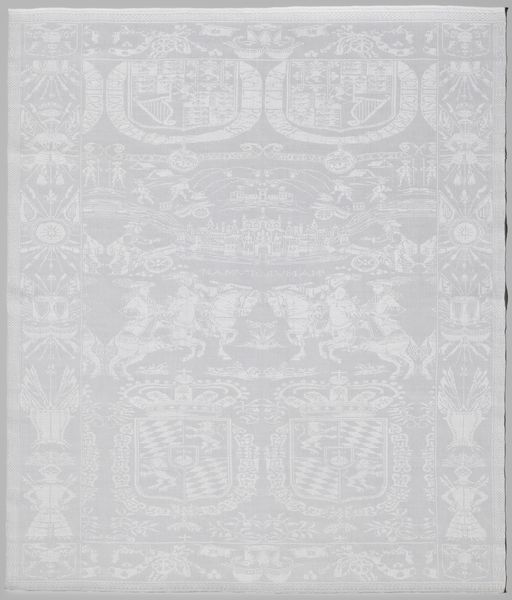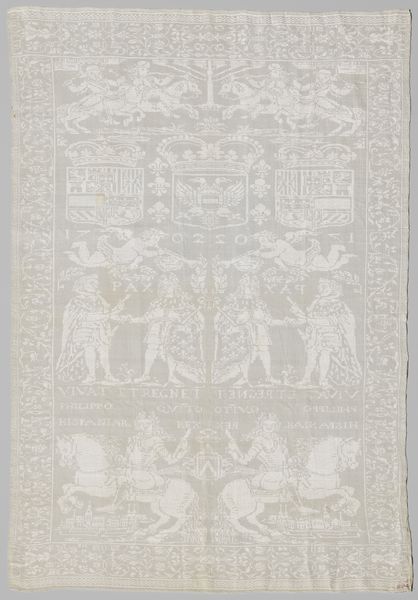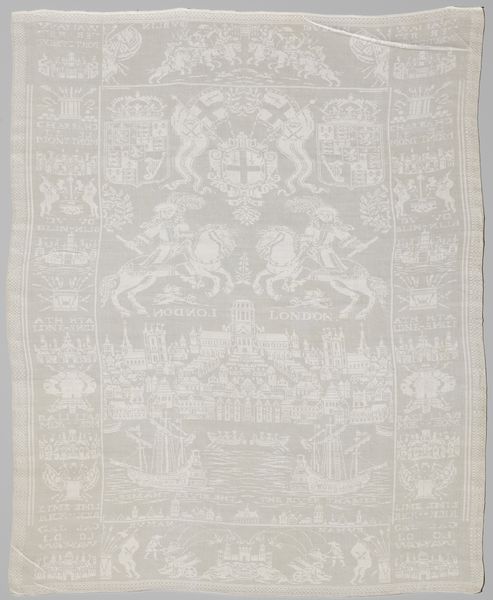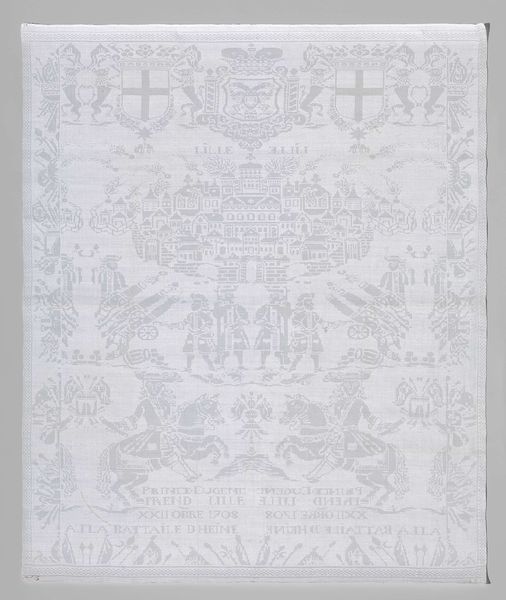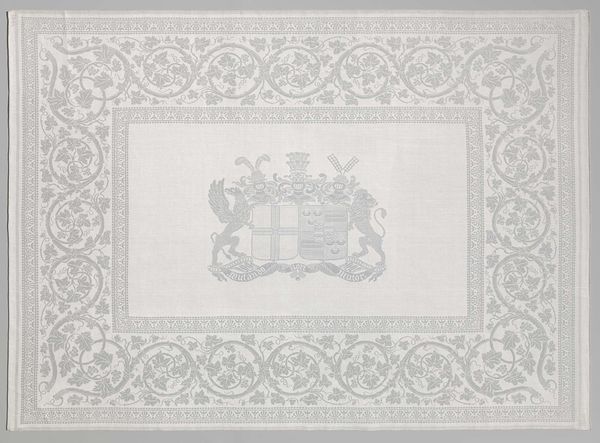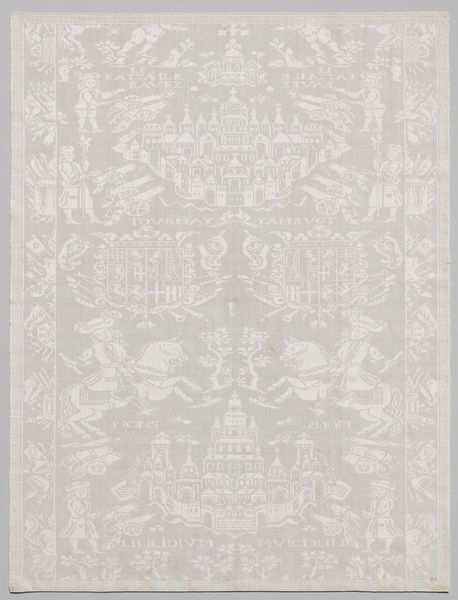
graphic-art, print, weaving, textile
#
graphic-art
#
natural stone pattern
#
dutch-golden-age
# print
#
weaving
#
textile
#
pattern design
#
repetitive shape and pattern
#
geometric
#
fabric design
#
repetition of pattern
#
vertical pattern
#
pattern repetition
#
history-painting
#
decorative-art
#
imprinted textile
#
layered pattern
#
combined pattern
Dimensions: height 98 cm, width 72 cm
Copyright: Rijks Museum: Open Domain
Curator: Before us is a linen napkin from 1601, titled "Servet met de Oranjeboom en het wapen van prins Maurits" or "Napkin with the Orange Tree and the Coat of Arms of Prince Maurits" by Passchier Lammertijn. What’s your initial take on it? Editor: It’s… understated, isn't it? The monochrome, the fineness of the weave…it almost vanishes into the wall behind it. But on closer inspection, you can really see how painstakingly it was made, a remarkable testament to the labour and skill involved. Curator: Absolutely. Look at how the artist utilized these dense arrangements of heraldic symbols. Coats of arms, weapons, mythological creatures…They speak to status, power, and a desire for historical permanence. Note the centrality of the Orange tree. Do you think it’s purely decorative? Editor: Decorative, yes, but also politically charged! The Orange tree as a symbol of the House of Orange, vital for Dutch identity at this time. A commercial object, like this napkin, also functioned as a signifier of political allegiance. And think about where it would be used—at the table, for feasts, continually reinforcing its message through use. Curator: Exactly! Tableware served as a powerful, if subtle, method of communicating identity and loyalty. What do you notice about its materiality? Is this commonplace or unique in the period? Editor: Well, the linen itself suggests wealth. We’re talking about fine, imported flax, meticulously woven. We should consider who had access to that level of consumption. Also the practice of weaving symbols into cloth tells about the artisan’s techniques and available technology. Curator: A great insight into the piece! Woven textiles served more purposes than basic hygiene; their patterns transmitted social, political and even spiritual ideas. These patterns acted like flags to declare belonging. Editor: Definitely. Considering how ephemeral so many aspects of life were then, imbuing these materials with political and familial power added to the permanence the users seemed to long for. This gives new context for domestic art. Curator: So, while it might fade into the background at first, this linen napkin really encapsulates the blending of craft, symbol, and social identity. Editor: It is an enduring symbol that the beauty of material is deeper than how it appears; the value of creation carries social, emotional, and economic messages.
Comments
No comments
Be the first to comment and join the conversation on the ultimate creative platform.
